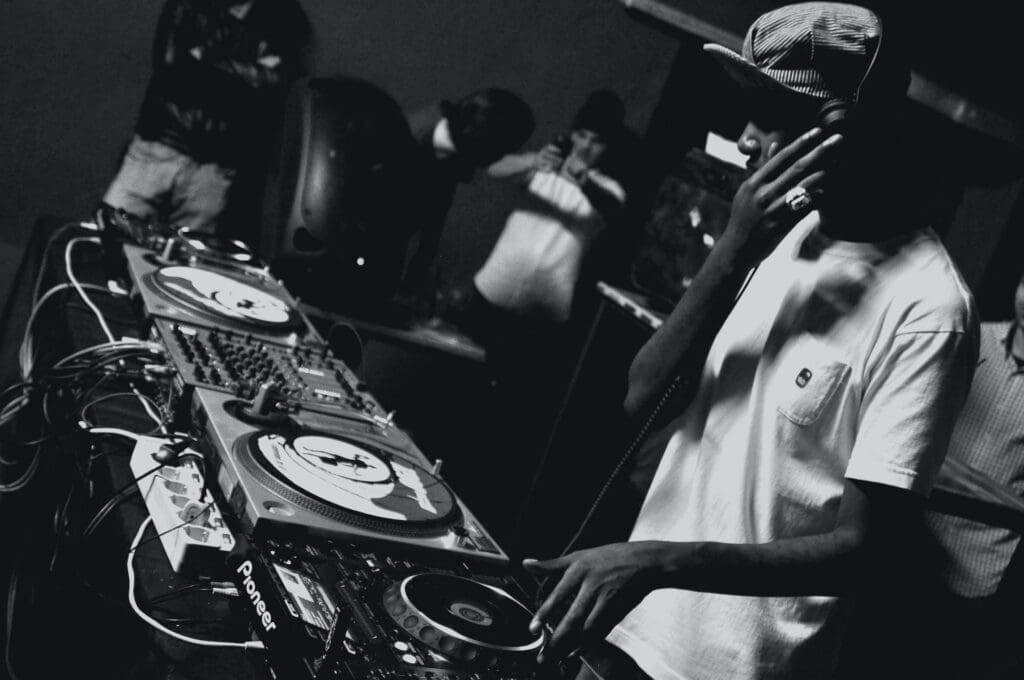House music is one of the most popular and influential genres of electronic dance music. It originated in the 1980s in Chicago and has since spread to clubs and festivals around the world.
This article will explore the history of house music, its key elements, and its influence on modern music. We will also look at some of the most popular house music artists and their impact on the genre. Finally, we will discuss the current state of this genre and its future.
History of house music
House music is a genre of electronic dance music that originated in the United States in the 1980s. It is characterized by a repetitive four-on-the-floor beat and is often created with synthesizers and drum machines.
The origins of house music can be traced back to the early 1980s in Chicago. DJs such as Frankie Knuckles, Ron Hardy, and Larry Levan were playing records in clubs such as The Warehouse and The Music Box. These DJs would mix different records together to create a unique sound.
In the mid-1980s, house music began to gain more mainstream attention and become more popular. This was due in part to the release of the influential single “On and On” by Jesse Saunders in 1984. This single helped to popularize the sound of house music and helped to spread the genre to other parts of the United States.
In the 1990s, house music began to gain popularity in Europe. This was due to the success of acts such as The Prodigy, The Chemical Brothers, and more. This genre also began to gain popularity in the United States during this time, with artists such as Moby and Fatboy Slim bringing the genre to a wider audience.
Today, house music is one of the most popular genres of electronic dance music and is enjoyed by people all over the world. It has evolved over the years and now incorporates elements of other genres such as hip-hop, techno and trance.
Elements of house music
- 4/4 Beat: A four-on-the-floor beat is a staple of house music, providing a steady and consistent rhythm to the track.
- Bass Line: A deep, pulsing bass line is essential to house music and is the foundation of the track.
- Synthesizer: Synthesizers are often used to create the melody and other musical elements in house music.
- Samples: Samples are often used to create a unique sound in house music, often by sampling classic disco or funk tracks.
- Vocals: Vocals are often used to add a human element to the track, and can range from spoken words to singing.
- Percussion: Percussion is often used to add texture and complexity to the track, and can range from claps and snaps to drum machines.
Influence on modern music
House music has had a major influence on modern music, particularly in the genres of EDM, hip-hop, and pop. Many modern artists have incorporated elements of this genre into their own sound, such as the use of a four-on-the-floor beat, heavy basslines, and synthesized or sampled sounds. House music has also been an influence on the production techniques used in modern music, such as the use of looping and sampling.
Top 3 house music artists:
Avicii
Avicii had a huge impact on house music. He was one of the most influential producers of the genre, and his work helped to popularize the genre and bring it to the mainstream. His style blended traditional house music with elements of pop, rock, and EDM, creating a unique sound that was both accessible and danceable. His songs, like “Wake Me Up,” “Levels,” and “Hey Brother,” were some of the most popular tracks of the decade and helped to define the sound of modern this genre. Avicii’s influence can still be heard by many of today’s house music producers.
David Guetta
David Guetta is widely considered to be one of the most influential figures in house music. He has helped to bring the genre to a wider audience, and his production style has had a major impact on the way house music is produced and heard. Guetta’s influence on this genre can be heard in the way he combines elements of pop and hip-hop with traditional house sounds. His use of catchy vocal samples, heavy basslines, and synthesizers has helped to create a unique and recognizable sound that is instantly recognizable as “Guetta-style” house music. He has also had a major impact on the way DJs approach their sets, often incorporating elements of hip-hop, pop, and rock into their sets to create something entirely new.
Calvin Harris
Calvin Harris has had a major impact on house music. He has been credited with helping to popularize the genre by creating a more mainstream sound that has become popular with a wider audience. His use of catchy melodies and infectious beats has made him a household name in the world of house music. He has also collaborated with other artists, such as Rihanna and Florence + The Machine, to create even more popular tracks. His influence has been so great that many artists have cited him as an inspiration for their own music.
Sub-genres of house music
Deep House
Deep House is a sub-genre of house music that originated in the 1980s, initially fusing elements of Chicago house with 1980s jazz-funk and touches of soul music. This genre’s tracks generally have a tempo between 110 and 125 beats per minute (BPM), and feature chord progressions and arrangements with influences from soul, jazz, funk, and disco. Deep House is known for its use of subtle vocal samples, atmospheric synths, and a deep bassline. The genre often features a relaxed, laid-back vibe, and incorporates elements of soul, jazz, funk, and disco. Deep House is often characterized by its lush, soulful sound and its emphasis on groove.
Tech House
Tech House is a subgenre of house music that combines elements of techno and house. It originated in the early 1990s in the UK and Germany and has since become popular worldwide. Tech House is characterized by its use of electronic instruments and samples, as well as its use of intricate and complex rhythms. It often features a four-on-the-floor beat and is usually more minimalistic than other forms of this genre. Tech House often incorporates elements of other genres such as electro, minimal techno, and progressive house. It is often seen as a bridge between techno and house music and is known for its energetic and driving sound.
Tribal House
Tribal House is a subgenre of house music that emerged in the early 1990s. It is characterized by its use of African and Latin American percussion instruments and rhythms, as well as its use of samples from these cultures. It is often combined with techno and trance elements to create a unique sound. Tribal House is often considered a more underground form of house music, and is often associated with the rave scene.
Disco House
Disco House is a subgenre of house music that combines elements of disco, funk, and soul with the rhythms and beats of modern house music. It is typically characterized by a four-on-the-floor beat, a deep bassline, and a strong emphasis on syncopated rhythms. Disco House often incorporates samples from classic disco records and often incorporates vocal samples as well. It is a popular genre in the underground dance music scene, and is often played in nightclubs and festivals.
Progressive House
Progressive House is a subgenre of electronic dance music that emerged in the late 1980s and early 1990s. It is characterized by a more melodic sound compared to other forms of house music, with the use of complex chord progressions, long builds, and breakdowns. This often incorporates elements from other genres such as trance, techno, and even classical music. It is often seen as a bridge between house and trance, as it combines the energy of the former with the melodic elements of the latter. Artists such as Sasha, John Digweed, and Eric Prydz are well known for their progressive house productions.
Acid House
Acid House is a subgenre of house music that emerged in the mid-1980s. It is characterized by its use of the Roland TB-303 bass synthesizer and its distinctive acid sound. The genre was pioneered by DJs such as Phuture, DJ Pierre, and Larry Heard. Acid House is known for its repetitive basslines, short melodic phrases, and its emphasis on the Roland TB-303 sound. It has been influential in the development of other electronic music genres, such as techno, trance, and drum and bass.
Minimal House
Minimal House is a subgenre of House music that emerged in the early 2000s. It is characterized by its minimalistic production style, which often features stripped-back elements such as minimal percussion, simple melodies and repetitive beats. Minimal House typically has a slower tempo than traditional House music, often ranging from 120 to 125 BPM. It is often characterized by its deep basslines, hypnotic grooves and minimalistic sound design. Minimal House is heavily influenced by Techno and Dub music, and has become a popular sound in the underground dance music scene.
Electro House
Electro House is a subgenre of electronic dance music that combines elements of electro, house, and techno music. It originated in the early 2000s in the United States and Europe, and has become increasingly popular in the last decade. Characterized by its use of synthesizers, drum machines, and heavy basslines, Electro House has become a staple of the EDM scene. The genre is often distinguished by its use of high-energy, distorted sounds and its emphasis on rhythm and melody. Commonly used instruments in Electro House include synthesizers, drum machines, and samplers. Popular artists in the genre include Deadmau5, Skrillex, and Zedd.
Funky House
Funky House is a subgenre of house music that combines elements of funk, soul, and disco music. It is known for its upbeat, energetic sound and its use of samples from classic funk, soul, and disco records. Funky House often features heavy basslines, funky percussion, and soulful vocals. It is a popular genre on the dance floor and is often heard in clubs and festivals.
Jackin House
Jackin House is a subgenre of house music that is heavily influenced by disco, funk, and soul. It is often characterized by its funky, soulful grooves and its use of samples from classic disco and funk records. It is a more upbeat, danceable variation of this genre that incorporates elements of old-school disco and funk, often with a hip-hop or rap influence. Jackin House is popular in clubs and on dance floors and is often used as a tool for DJs to create remixes and mash-ups of classic disco and funk records.
Summary
House music is an upbeat genre of electronic dance music. It is characterized by a four-on-the-floor beat and has a strong emphasis on rhythm and groove. It’s an uplifting and energizing genre that is sure to get you moving and grooving. You can search for BPM to understand more by using the BPM Tapper tool on Music Gateway. Try it today.













